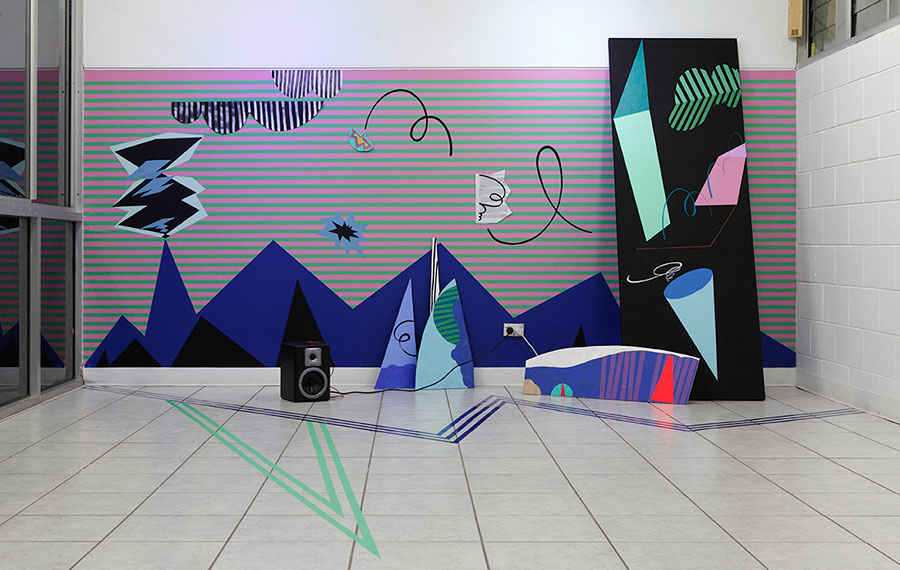
The centenary of Kazimir Malevich's Black Square painting in 2015 has been cause for tribute exhibitions and projects worldwide including in Darwin. Towards the end of the year Darwin artist and curator Koulla Roussos will mount a group exhibition by local artists of Black Square-related works. In September Amina McConvell showed work arising from a Tactile Arts studio residency. Colour Masses in the Fourth Dimension was named after Malevich’s painting Painterly Realism of a Boy with a Knapsack: Colour Masses in the Fourth Dimension (1915).1
The two-part titles of McConvell’s work for this exhibition (Post Atomic #1 and Post Atomic #2) recall US artist Taryn Simon’s recent Black Square XVII work for Russia’s Garage Museum of Contemporary Art, a work which repurposes nuclear waste over the next 1000 years through a collaboration with the Russian State Atomic Energy Corporation.
Since graduating from Sydney’s National Art School in 2007, McConvell has developed a unique installation-based practice which is founded in geometric abstraction. Her installations generally deploy wall and floor painting along with painted and constructed objects. More recently, they have also incorporated light and sound elements, partly influenced by time spent living in Jogjakarta, Indonesia, responding to the fertile fusion of everyday life and popular culture in its thriving contemporary art scene.
Colour Masses in the Fourth Dimension had all of these: light, sound, mural-scale painting and painted objects as well as a lot of collage. Her artist statement described the overall work as "a big collage ... just a bunch of shapes and patterns arranged in the space, made quickly and moved around intuitively in the way that you would construct a sketch ...". The exhibition’s accompanying sound work Static Dream (2015) by Darwin-based artist Mats Unden was composed for the show. As is the nature of collaboration, this electronic score also influenced McConvell’s visual abstraction.
The exhibition’s relationship to Malevich’s 1915 painting (comprising one black and one red square on white) was conceptual rather than literal. There were no actual squares to be found in McConvell’s installation save for a grid of nine square-based collage works and a design element on the front of each of the exhibition’s two speakers. This latter detail is worth mentioning as the speakers and their electrical cords were visibly part of the installation (rather than hidden) in tune with McConvell’s desire to lay bare the logic of her construction and because the audio-visual dynamic was so central to this particular installation. As an exhibition that came out of a studio residency, it was also presented as a "work in progress" rather than a final outcome, and with an emphasis on process and improvisation.
The exhibition’s audio-visual dynamic worked best on the opening night - with an opening night crowd creating a sense of being at an alternative nightclub, with a twilight ambience outside. It was difficult to achieve a similar intensity of immersion during daylight hours as the gallery features sizeable window frontage. Indeed, working with this gallery space normally given over to "craft" objects was perhaps the greatest challenge for a non-objective installation artist. McConvell met this challenge exceedingly well, a testament to her growing confidence and sophistication with the installation medium. This exhibition marks a particularly busy year for this hard-working artist, coming after two solo exhibitions in Sydney and her selection as a finalist for the Griffith University Gallery’s Churchie National Emerging Art Prize 2015.

